With 1 in 7 people estimated to be neurodivergent, inclusive office design has never been more important. Discover the key features of neurodivergent office spaces and how to create a workspace that works for your whole team.
By Making Moves London
June 11, 2025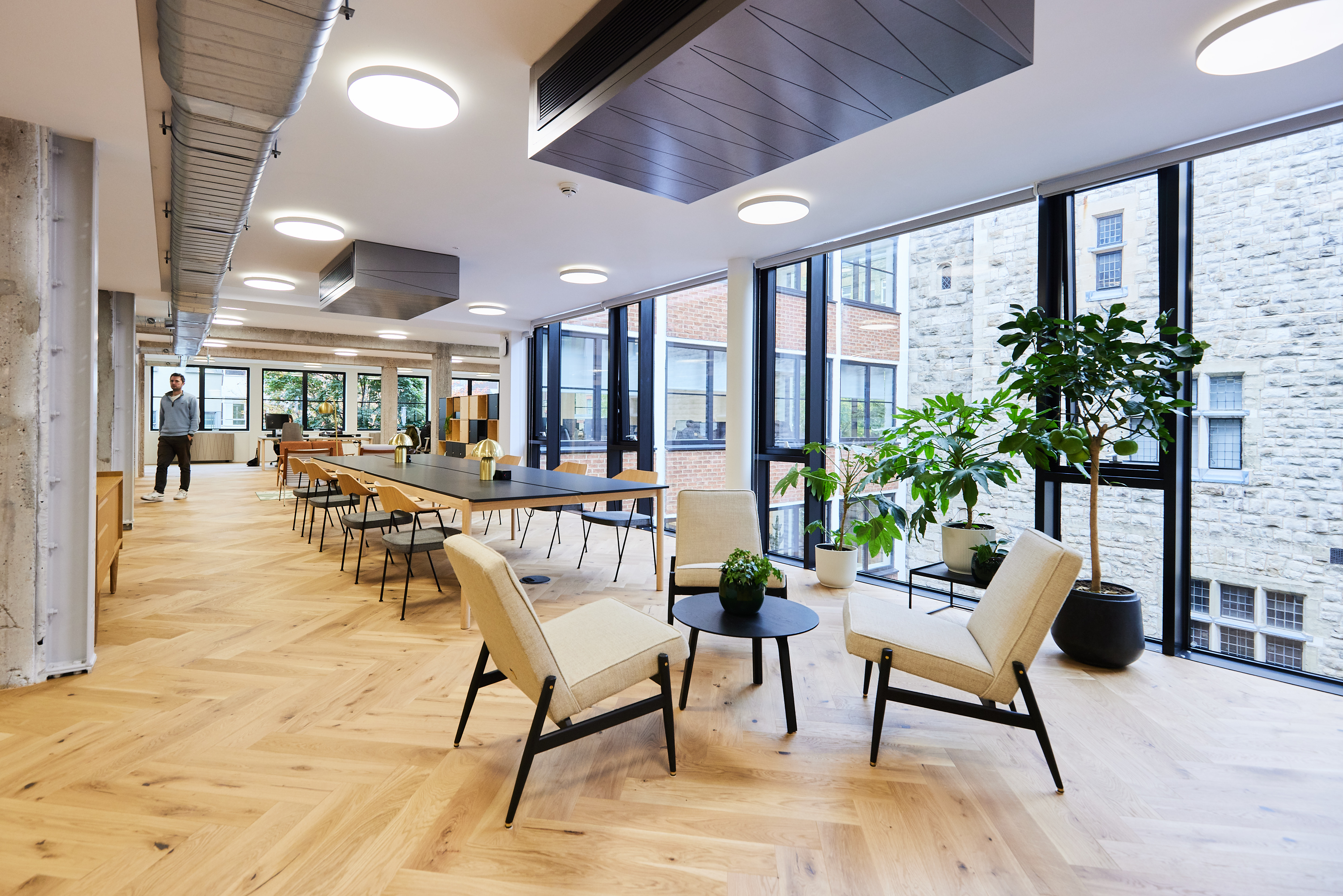
Neurodivergence in the workplace is gaining long-overdue attention – and for good reason. As more businesses aim to foster inclusive and productive environments, it’s crucial to consider how office design can either support or hinder neurodivergent individuals. Neurodiversity includes conditions such as autism, ADHD, and dyslexia, and impacts how people process information, communicate, and interact with their surroundings.
At Making Moves, we’ve helped companies across London find and fit out commercial spaces that empower every team member. In this blog, we’ll explore what neurodiversity means, the challenges many neurodivergent employees face, and practical steps your business can take to create an office environment that works for everyone.
Neurodiversity refers to the natural variation in how people think, learn, and process the world around them. It encompasses a range of neurological differences, including:
According to NHS England, it is estimated that 1 in 7 people are neurodivergent – although with increased awareness and late diagnosis, this is likely to be higher.
While neurodivergence is classed as a disability, many neurodivergent people do not identify as disabled. However, they may still require support to navigate a society – and workspaces – designed around neurotypical norms. Inclusive office design plays a crucial role in creating environments where everyone can feel comfortable, focused, and able to thrive.
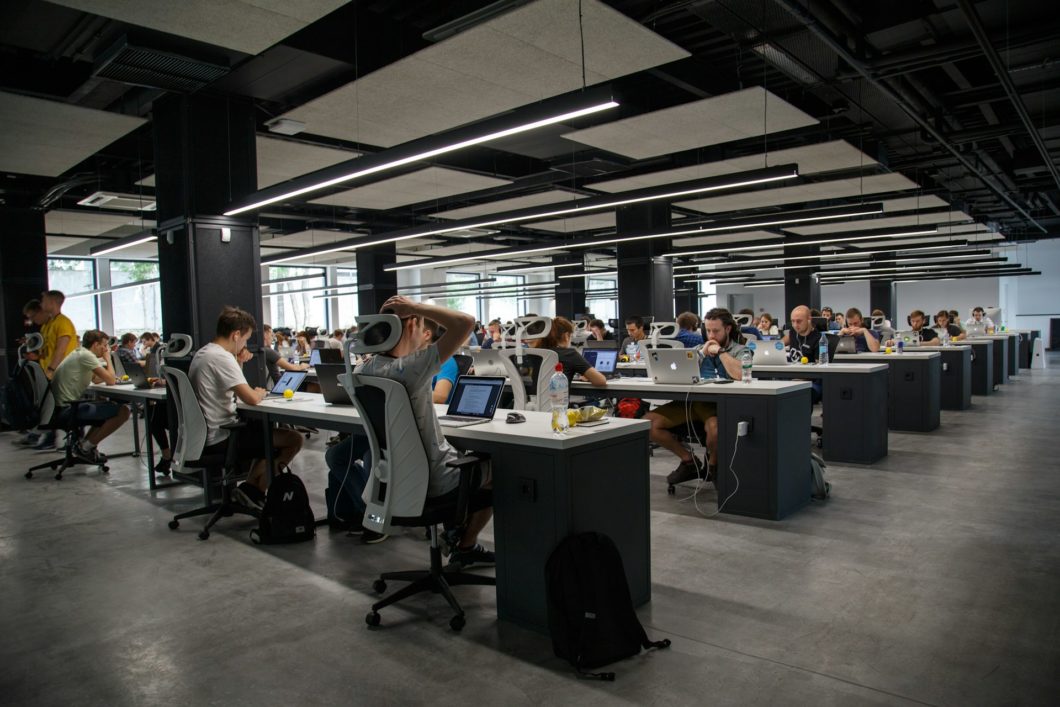
Despite increasing awareness of neurodivergence in the workplace, many traditional office environments are still not equipped to support neurodivergent employees effectively. The result? Unintentional barriers that can limit comfort, performance, and inclusion.
Here are some of the most common challenges – and why they matter:
Neurodivergent individuals may be more sensitive to environmental stimuli such as bright lighting, sudden noises, strong smells, or certain textures. These sensory inputs, which might go unnoticed by neurotypical colleagues, can become overwhelming and distressing.
For example:
Impact: Sensory overload can lead to fatigue, reduced concentration, and heightened stress, making it difficult to maintain focus or complete tasks efficiently.
While open-plan offices encourage collaboration, they often do so at the expense of privacy and peace. For neurodivergent individuals, the constant movement, noise, and unpredictability can be distracting and emotionally draining.
According to a recent study, 35% of neurodivergent employees experience frequent distractions in the workplace – with many saying it impacts their ability to do their jobs effectively.
Impact: Without access to quiet or controlled environments, tasks that require deep focus become difficult, and stress levels increase.

Communication styles vary greatly. For some neurodivergent people, interpreting tone, facial expressions, or ambiguous instructions can be challenging. This is especially true in fast-paced office settings where information is often shared informally or non-verbally.
Common difficulties include:
Impact: These hurdles can lead to miscommunication, isolation, and a lack of confidence – which may discourage valuable input from neurodivergent team members.
Many office cultures still promote rigid routines – such as 9–5 working hours, hot desking, or set methods for completing tasks. However, neurodivergent individuals often benefit from personalised working patterns, such as:
Impact: A one-size-fits-all model can prevent neurodivergent individuals from thriving. Inflexible systems can hinder productivity, job satisfaction, and even long-term employment.
Lastly, it’s worth noting the impact of invisible barriers, such as workplace stigma or lack of education. When neurodivergence is not openly discussed or understood, individuals may feel the need to mask or suppress their differences – which can be mentally exhausting.
Impact: This lack of psychological safety discourages people from seeking support or requesting adjustments – potentially leading to burnout, disengagement, or turnover.
Understanding these challenges is the first step towards creating a more inclusive office environment. By acknowledging the diverse needs of neurodivergent individuals, businesses can begin to reshape their spaces, policies, and cultures in ways that benefit everyone.
Designing a workplace with neurodiversity in mind isn’t just the right thing to do – it’s good business. Creating an inclusive, accessible environment helps unlock the potential of every employee, leading to tangible benefits across your organisation.
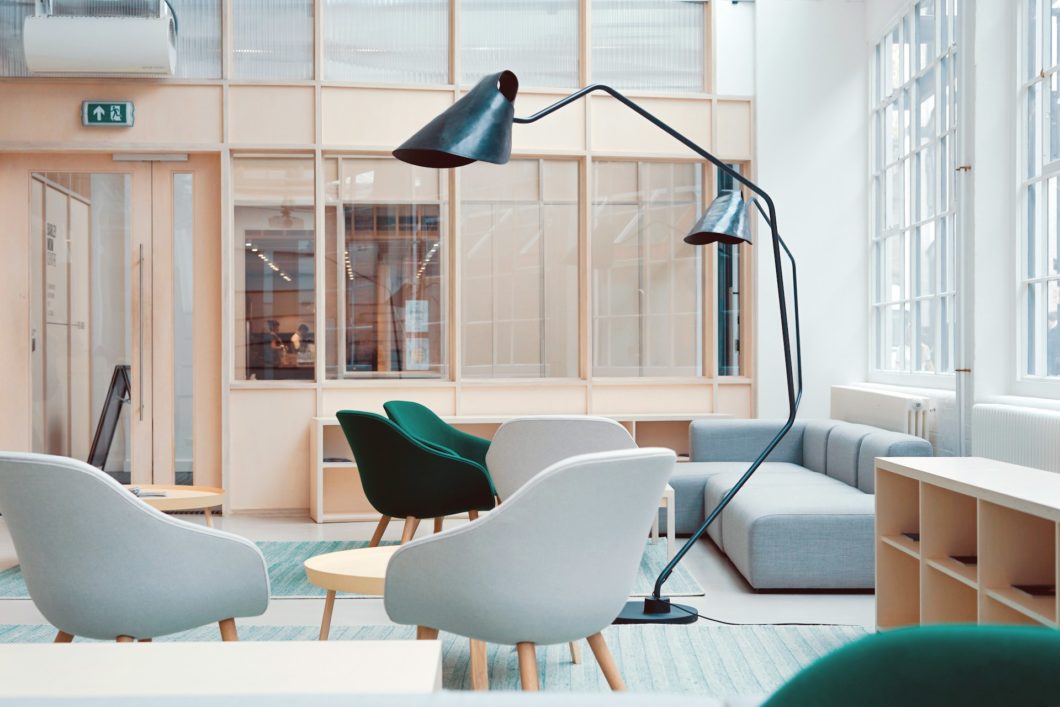
Improved Employee Wellbeing: Supportive environments lead to reduced stress levels, better mental health, and higher overall job satisfaction. While this is especially impactful for neurodivergent employees, neurotypical team members benefit too. Quiet zones, calming colour palettes, and flexible breakout spaces are universally appreciated.
Increased Productivity: Neurodivergent individuals often have unique problem-solving abilities and hyper-focused skill sets. Providing an environment that allows them to harness these strengths without sensory or structural distractions can result in faster task completion, greater attention to detail and higher engagement and job satisfaction.
Higher Retention and Talent Attraction: A Motionspot study revealed that 22% of neurodivergent applicants had declined a job offer due to the physical design of a workplace, and a further 15% left a place of work due to the design. Workplaces that cater to a wide range of needs are more likely to retain top talent and attract diverse hires – especially as more job seekers prioritise inclusive employers.
Greater Business Success: Inclusion sparks innovation. Companies that embrace diversity and inclusion are 35% more likely to outperform their competitors, and those with inclusive cultures can see 19% higher revenue, according to Motionspot.
Designing for neurodiversity starts with rethinking what a ‘productive’ office looks and feels like. Rather than prioritising a one-size-fits-all layout, a neurodivergent-inclusive office embraces variety, control, and comfort – allowing employees to shape their environment based on how they work best.
Below are four core principles to guide your approach:
Sensory overload is one of the most common challenges neurodivergent individuals face in traditional offices. Thoughtful design can dramatically reduce these triggers:
The goal is to create a sensory environment that feels balanced, not overwhelming.
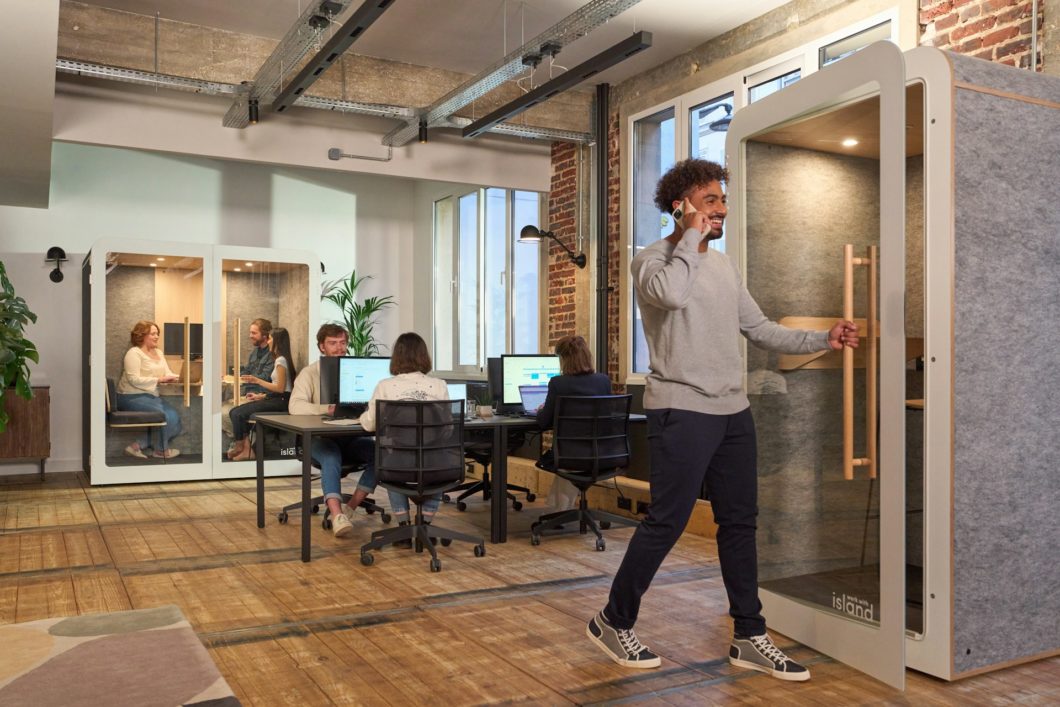
Neurodivergent individuals often need different types of spaces depending on the task or how they feel that day. Offering variety gives everyone the autonomy to work where they feel most focused and comfortable.
This kind of flexibility helps reduce stress while improving productivity and morale.
Navigating an office should feel intuitive – not confusing or overstimulating. Clear, consistent wayfinding supports neurodivergent employees and benefits new starters, visitors, and clients.
Good wayfinding isn’t just functional – it contributes to an environment that feels safe and inclusive.

The right technology can empower neurodivergent employees by supporting communication, focus, and organisation. Importantly, these tools should be easy to access and stigma-free.
Making assistive technology readily available and easy to request ensures employees don’t need to jump through hoops to get what they need to succeed.
Keen to learn more? Explore our guides on Why Good Office Lighting Matters and Mastering Office Acoustics to discover how even small design details can significantly impact wellbeing and productivity.
Yes – under UK law, employers have a legal obligation to support neurodivergent employees by making reasonable adjustments in the workplace. Neurodivergence is recognised as a disability under the Equality Act 2010, which protects individuals from discrimination and ensures equal access to work opportunities.
Reasonable adjustments are changes to the work environment or processes that help remove barriers for disabled employees – including those who are neurodivergent. These can include:
Employers are expected to take proactive steps to identify and implement adjustments that enable neurodivergent employees to perform at their best – not just react after an issue arises.
Creating a neurodivergent-friendly workplace isn’t about a one-off design change – it’s about fostering a culture of inclusion through space, systems, and ongoing collaboration.
Whether you’re moving into a new office or reimagining your current one, here’s how to get started:
Before making changes, take stock of your current environment. A workplace assessment helps identify design elements or systems that may unintentionally disadvantage neurodivergent employees.
This could involve:
Consider working with an inclusive design consultant who specialises in neurodiversity to ensure you’re asking the right questions and spotting overlooked barriers.

The best insights come from the people using the space every day. Involving neurodivergent employees in the design process helps ensure your changes are relevant and respectful. You can gather feedback through anonymous surveys, one-to-one sessions, focus groups or facilitated workshops.
To get useful, actionable input, try asking questions like:
These kinds of questions not only highlight specific design needs but can also uncover cultural or process-related barriers that may not be visible from the outside.
Remember: You shouldn’t assume that all neurodivergent people will want the same thing or benefit from the same solution. What works for one person may not work for another, so gathering a broad range of perspectives is key.
Designing for neurodiversity goes beyond aesthetics – it’s about psychology, behaviour, and how space shapes experience. That’s why partnering with professionals who specialise in inclusive or neurodivergent-friendly design can make all the difference.
At Making Moves, we’ve helped hundreds of businesses not only find the right office but transform it into a space that truly works for their team. Our experience managing office fit-outs and redesigns means we know how to balance the needs of your business with the practical requirements of an inclusive space.
Check out our guide on how to design an inclusive office space for practical ideas, expert insights, and tips to help you get the most from your workplace.
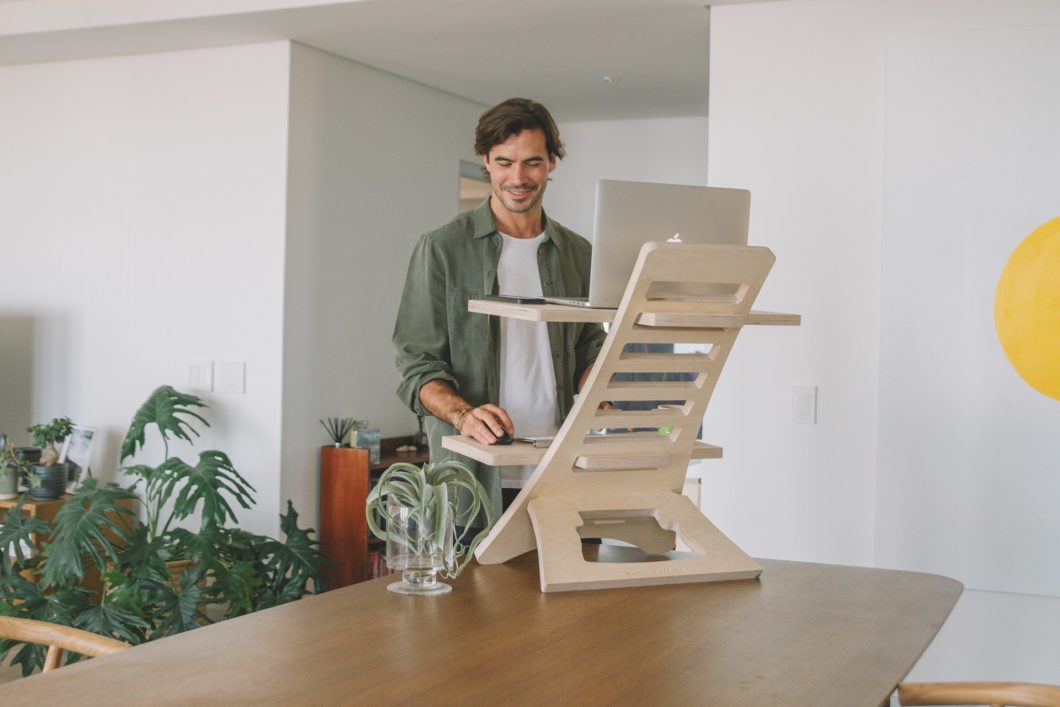
Not all needs can be predicted, so build flexibility into your space from the outset. That might include:
Let employees personalise their own space where possible. Even small changes – like lighting preferences or desk layout – can make a big difference in comfort and productivity.
Inclusivity is never ‘done’. As your team evolves, so too should your workplace. What works for your employees today might need to adapt tomorrow – whether due to team growth, changing work patterns, or individual needs.
Regular check-ins, workspace reviews, and an open-door approach to feedback can make a huge difference. It’s not about making one perfect decision – it’s about building a culture that is open to learning, evolving, and listening.
Top tip from Louise Lawson, a Senior Project Manager at Making Moves:
“The best-designed offices aren’t static – they’re built to evolve. When we work with clients, we encourage them to think beyond the move-in day. The most inclusive environments are the ones that flex with your team’s needs over time. That might mean trialling new layouts, introducing quiet zones, or simply giving people more choice in how they work.”
By showing a genuine willingness to learn and adapt, you create more than just an inclusive workspace – you build a culture of trust, respect, and performance.
Neurodivergent-inclusive design isn’t just being talked about – it’s being implemented. Leading organisations across the UK are rethinking how their office spaces can support a wider range of needs, with thoughtful design features that benefit everyone.
Here are three examples of companies putting these principles into practice:
View this post on Instagram
The BBC Cymru Wales Broadcast Centre in Cardiff has redefined what inclusive office design can look like. Working in collaboration with BBC Cape – the organisation’s neurodiversity initiative – the project team applied learnings from cognitive accessibility toolkits and immersive 360VR experiences to shape every element of the building through a neurodivergent lens.
Key considerations included:
What makes this project stand out is how seamlessly inclusivity was woven into the design – without it being overt or ‘othering.’ Visitors may not notice the neuro-inclusive features, but those who benefit from them feel the difference. It’s a powerful example of how thoughtful, universal design supports everyone while empowering neurodivergent employees to thrive.
View this post on Instagram
Barclays’ 500,000 sq. ft. campus in Tradeston, Glasgow, is one of the most significant inward investments in Scotland – and a bold statement about the future of work. More than just a modern workspace, the campus was developed in partnership with Scottish Autism to ensure it meets the needs of neurodivergent employees and visitors.
Inclusive design elements include:
By focusing on flexibility, wellbeing, and accessibility from the outset, Barclays has created an environment that attracts top talent and enables them to perform at their best. This is a great example of how neurodivergent considerations can be seamlessly integrated into large-scale corporate infrastructure — without sacrificing innovation or aesthetics.
View this post on Instagram
Virgin Media O2’s new headquarters in Paddington sets a high benchmark for inclusive office design. Spanning over 80,000 sq. ft. across six floors, the space was co-created with employee focus groups and DE&I representatives to ensure the needs of neurodivergent individuals were considered throughout.
Highlights include:
The result is a headquarters that doesn’t just accommodate difference – it actively celebrates it. Virgin Media O2’s people-first approach demonstrates how co-creation and flexibility can foster a sense of belonging while enhancing creativity and connection.
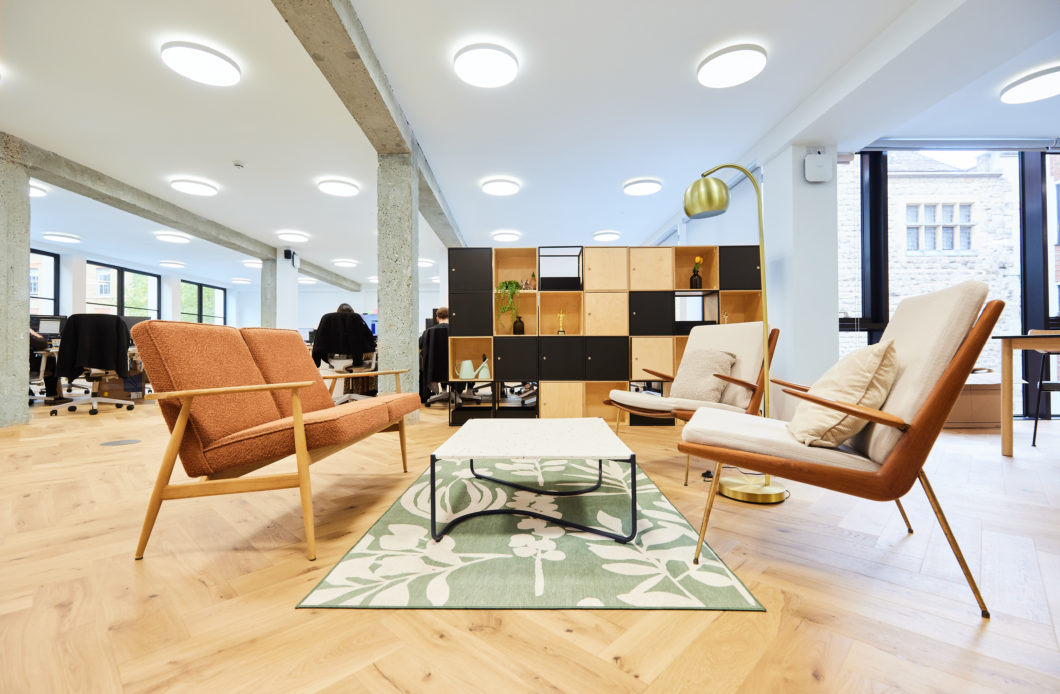
When LoopMe set out to find a new London HQ, they needed a space that would support collaboration while catering to a wide range of working styles. We helped them source and fit out a 7,300 sq. ft. single-floor office, prioritising natural light, flexibility, and comfort.
The design included an increased number of small meeting rooms for quieter conversations, improved acoustic performance to reduce distractions, and dual-purpose touchdown tables for both focused tasks and informal chats. A spacious tea point and breakout area encourages relaxed interaction away from desks.
By designing with adaptability in mind, the new workspace supports productivity, wellbeing, and different ways of working – helping every team member feel comfortable and focused. See more of our case studies here.
Want to go deeper? These resources are a great starting point:
As awareness of neurodiversity grows, so too does the responsibility of employers to create truly inclusive environments. By understanding the needs of neurodivergent individuals and adapting your office accordingly, you’ll foster a happier, more productive team – and future-proof your business.
Whether you’re looking to move into a new space or reimagine your current one, our team at Making Moves can help you find and fit out an office that works for everyone.
Get in touch with our team today to talk about inclusive office design today.

? Source, negotiate and manage entire office moves.
? Dispose, sublet or redesign your office.
?️ Professional, independent support.